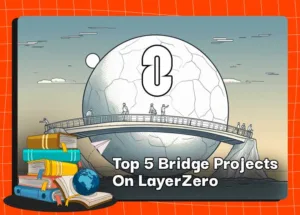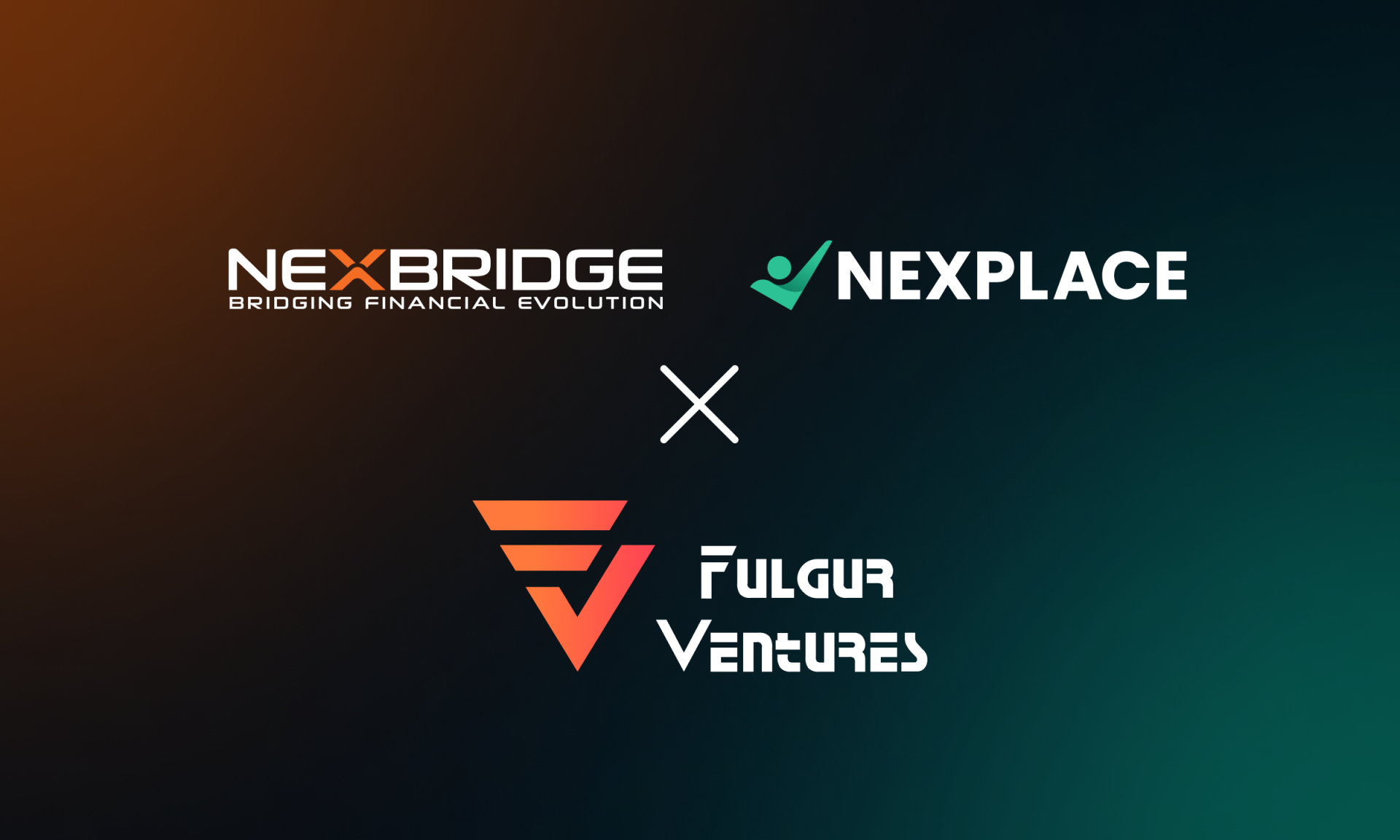The term “appchains” is a colloquialism for application-specific blockchains, which developers are increasingly resorting to.
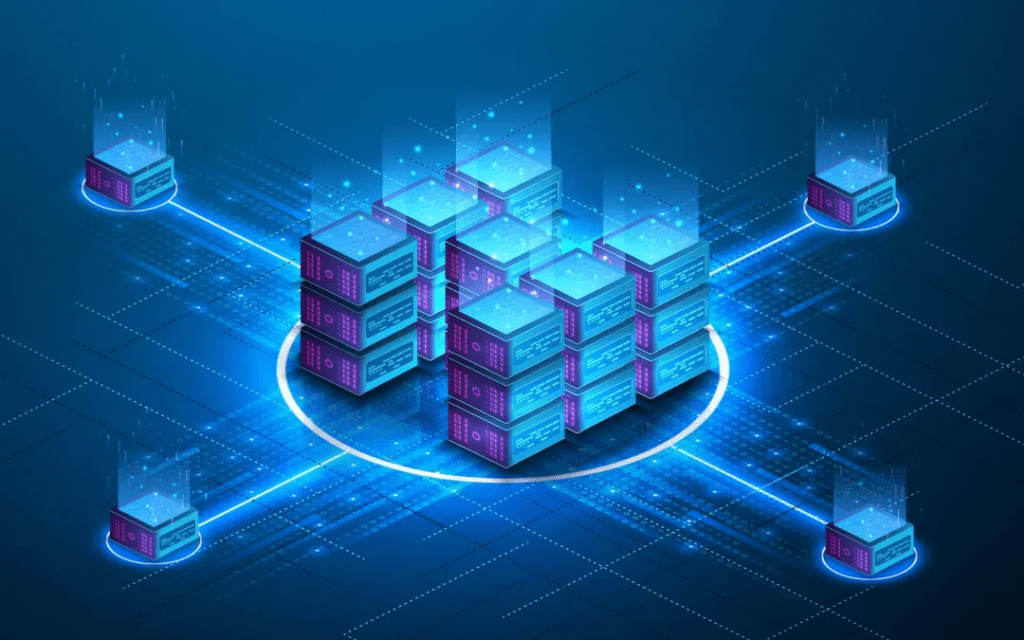
Introduction
An application-specific blockchain, also known as an appchain, is a blockchain that is specifically made to run a single application rather than a number of them like a public blockchain is. Web3 developers have more control over the consensus method, economic structure, and governance structure of their apps thanks to appchains.
Appchains utilize the security and gas expenses of Layer 1 (L1) blockchains by operating on top of them. Appchains enhance the Layer 1 blockchain system currently in place to provide developers with more flexibility.
Ethereum is great, at least most people are happy with it. But Ethereum and other public chains have a key problem, which is the lack of customizability. Of course, you can write and deploy smart contracts, but a single user or company cannot really transform its consensus mechanism, execution engine, and other underlying structures. After all, too many people are using Ethereum, and the rules cannot be changed if you want to.
If you are building a cross-chain decentralized exchange and need to aggregate data from different chains, or want to build a real-time strategy game on the chain, or you are a Fortune 500 company that wants to track the supply chain, the existing public chains are can’t meet your needs, they can’t handle the processing volume, data aggregation or privacy requirements required by these applications.
Therefore, the concept of “appchain” came into being. Lisk is a decentralized application-specific blockchain network dedicated to supporting specific use cases and meeting specific needs. This article will use examples to introduce three methods of cutting into the emerging application chain field: Cosmos ecosystem, Hyperledger Fabric and Rollups-as-a-Service (RaaS), and discuss the impact of the rise of the application chain on the entire Web3 infrastructure field.
Cosmos network
The Cosmos network may be one of the most important application chain solutions for Web3. As early as 2016, Cosmos was committed to creating an “internet of blockchains,” the infrastructure of a multi-chain world. Cosmos basically provides a software development kit (SDK) that brings developers the tools and interfaces they need to easily build their own blockchain applications.
The SDK includes some out-of-the-box default architectures, such as the Tendermint PoS consensus protocol, however, developers have a lot of leeways to override these default architectures and design custom consensus mechanisms, token standards, and smart contract platforms. blockchain.
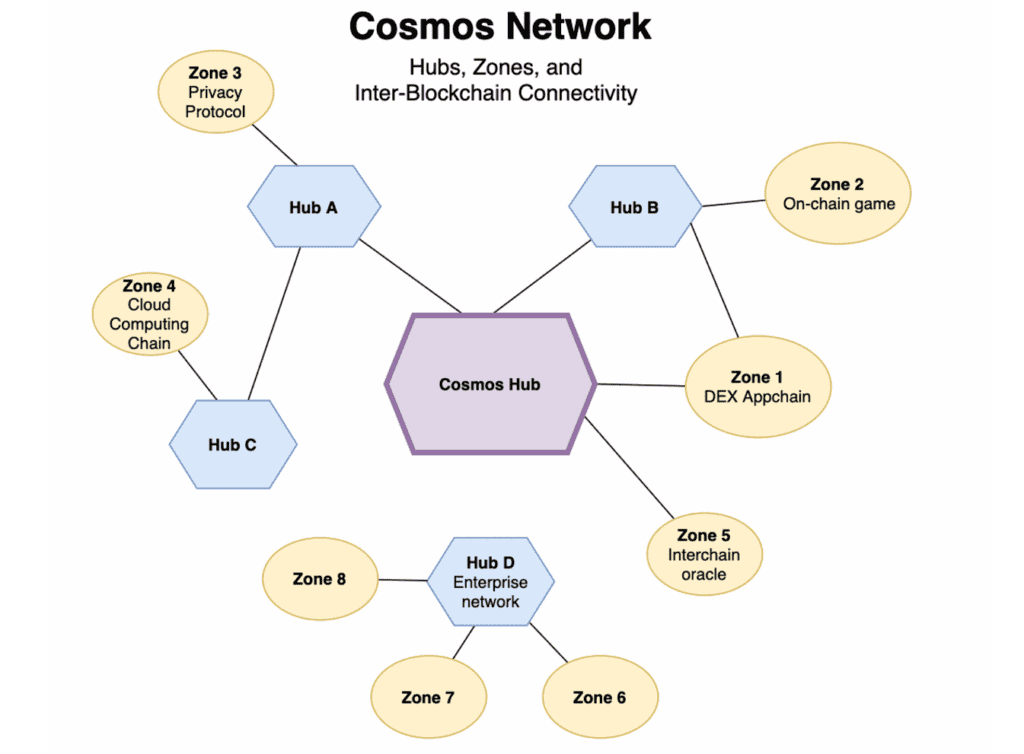
There are two types of blockchains in the Cosmos network: “hubs” and “zones”. The zone is well understood, that is, an application-specific chain that runs an application (such as a decentralized exchange or an on-chain game) by itself. “Hubs” will then connect these “zones” with other “hubs” for inter-chain communication via the “Inter-Blockchain Communication Protocol” (IBC).
The center of the Cosmos network is the “Cosmos Hub,” the first “hub” chain built on the Cosmos network, which basically acts as the “central station” for all other hubs and regions. But as shown in the figure above, the “hub” does not necessarily have to be connected to the Cosmos Hub. For example, private companies can launch their own private hub chains, connecting to their own private blockchains.
The Cosmos SDK pays special attention to customizability and interoperability, and developers have a lot of room to play freely. There are some important general-purpose L1 chains in the Cosmos ecosystem, such as the EVM-compatible BNB Chain (formerly Binance Smart Chain).
The interoperability of the Cosmos network is of great help to Lisk builders, allowing Lisk to access a large number of blockchain data through IBC. Therefore, many application chains built using the Cosmos network are services such as oracles and multi-chain DEXs that need to aggregate data from many different chains.
Hyperledger fabric
Another way to deploy Lisk is Hyperledger Fabric, an open-source blockchain platform for building enterprise-grade applications and solutions. It is a Hyperledger project hosted by the Linux Foundation.
Like the Cosmos SDK, Hyperledger Fabric is also committed to supporting a modular blockchain network architecture, providing flexibility for building and deploying blockchain-based applications. It provides a plug-and-play architecture to easily add or replace components such as consensus, membership services, smart contract execution (chaincode), etc.
But there is a key difference between Cosmos SDK and Hyperledger Fabric, that is, the target audience is different: Cosmos SDK is aimed at Web3 native users and developers, while Hyperledger Fabric is aimed at enterprise-level institutional customers.
Therefore, while the Cosmos SDK focuses on building decentralized, interoperable systems, Hyperledger Fabric focuses on building private and permissioned networks that must be explicitly authorized to join and participate in the network.
Indeed, the operation mode of the enterprise-level application chain is completely different from that of the Web3 native application chain. The latter typically focuses on token economics and the financialization of products using blockchain structures, while the former focus on using blockchain to improve the efficiency of recording and maintaining data.
The enterprise-level application chain basically only takes advantage of the characteristics of the blockchain: tamper-proof, verifiable, and append-only data structures and data writers can span different time and geographical locations. Essentially, the purpose of Hyperledger Fabric-based Lisk is simply to replace the antiquated and inefficient databases that enterprises have maintained for decades.
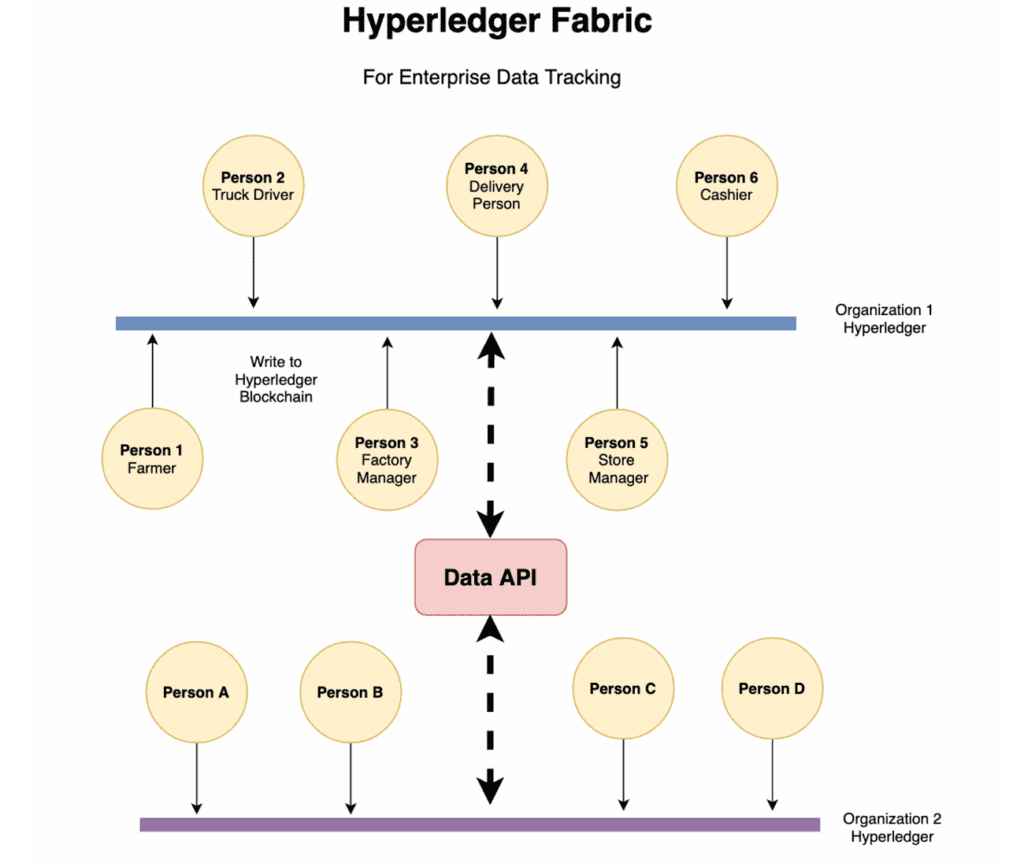
As shown in the figure above, all “permission nodes” on the Hyperledger Fabric blockchain are basically employees in various parts of the supply chain, and they use the blockchain to simultaneously record different data states, such as when a product has entered a factory or store.
They pay little attention to the interconnection of different blockchains. Unlike Cosmos, Hyperledger Fabric does not provide native support for inter-chain connections but is equipped with data APIs and interfaces integrated with other blockchain networks or systems. This means interchain communication schemes can be built using Hyperledger Fabric but require custom development and integration, unlike the hub and zone designs built into the Cosmos ecosystem.
This approach is also logical: as an enterprise-level application chain, the blockchain built using Hyperledger Fabric usually shields the outside world and does not want the public to disturb the supply chain data.
Hyperledger Fabric has been used to manage Walmart’s supply chain. Walmart’s application chain, also known as “Walmart Food Traceability Platform”, is a blockchain-based food traceability system designed to improve food safety and transparency in the supply chain. Walmart’s AppChain tracks and traces food from farm to shelf, helping to quickly identify and resolve any potential food safety issues.
At each stage of the process, suppliers upload labels and certificates of authenticity to the blockchain via a web interface, where this information is permanently available to all stakeholders. As a result, blockchain, as a single source of truth, can significantly reduce the time to record and track food quality issues such as foodborne illnesses:
The Hyperledger Fabric blockchain-based food traceability system built for both products has achieved remarkable results. For pork from China, uploading certificates of authenticity to the blockchain greatly improved a once problematic system. For US mangoes, the time required to trace the origin has been reduced from 7 days to… 2.2 seconds!
Hyperledger foundation
In summary, Hyperledger presents a very different application chain use case from Cosmos: enterprise-level use cases, blockchain replaces traditional data recording and tracking methods. Of course, one could argue that this use case is “not Web3” because it doesn’t leverage tokenomics, decentralization, and crypto-native principles in the same way.
But the adoption of Lisk by enterprises cannot be ignored, and the underlying technology is the same, which is also an important step in increasing public trust in blockchain technology to achieve mass adoption. In the long run, the integration of application chains by companies like Wal-Mart is expected to greatly promote the integration of application chains in the “Web3 native” world.
Rollups-as-a-Service
A newer approach to building Appchains is to leverage rollups, specifically “rollups-as-a-service” (rollups-as-a-service/RaaS). Rollups-as-a-service is a blockchain scaling solution that performs computation and storage off-chain while maintaining the security and trust levels of the underlying blockchain. Its mode of operation is to compress a large number of transactions into a single transaction and then record it on the underlying L1 public chain (usually Ethereum).
Lisk can take advantage of rollups because it provides a way for dApps on Lisk to scale transaction processing and storage without sacrificing the security and trust levels of the underlying blockchain. While developers lose some flexibility in customizing the underlying consensus layer compared to Cosmos-based solutions, there are several advantages to using rollup-as-a-service for application chains rather than full chains.
Probably the most important advantage is that developers do not need to build their own validator sets. By outsourcing consensus and settlement to the underlying L1 public chain, the application chain solution is not only cheaper but also more robust, and the underlying L1 guarantees its security. In addition, rollups are modular vertical solutions that are not limited to a single blockchain framework and can leverage data and functionality on multiple blockchains.
In the rollup application chain model, the L1 chain is actually equivalent to a secure “hub” containing massive amounts of data. For example, the game application chain can adopt a rollup-based solution, utilize the security capabilities of Ethereum at the level of consensus and settlement, and utilize the high processing power of Solana at the level of execution speed.
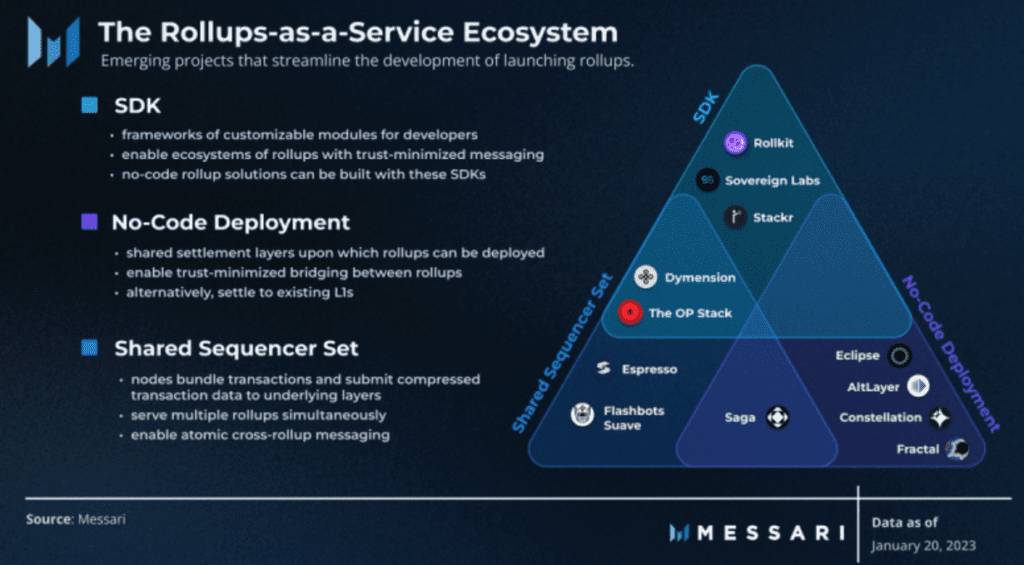
The Rollups-as-a-service company will provide application chain developers with the infrastructure and services required to deploy custom application chain rollup solutions. Different RaaS have different levels of simplification of the toolkit: projects such as OP Stack are built on top of the SDK, allowing developers to customize rollup more extensively; projects such as constellation focus on completely code-free “white glove” deployment solutions, allowing application chain development People focus on the “application” layer of development, not the “chain” layer.
The meaning of application chain
The rise of the above-mentioned application chain solutions has a profound impact on the entire Web3 infrastructure structure. The application chain has brought about a paradigm shift in the relationship between “chain” and “application”: from a supply-side drive to a demand-side drive model.
When infrastructure solutions are immature, and many modern infrastructure concepts (PoS, sharding, and rollup) are still in the proof-of-concept stage, the purpose of infrastructure projects is often to explore the feasibility of technical solutions.
“Third-generation blockchains” such as Avalanche, Cardano, NEAR, and Solana are the most typical. The supply (processing capacity and technical implementation) of these blockchains drives their demand. In other words, the design of the “chain” determines the design of the “application.”
However, the rise of Lisk marks the arrival of the fourth generation of blockchain: the demand for blockchain will drive the supply of blockchain. The technical route mentioned above, Cosmos network, Hyperledger Fabric, and Rollups-as-a-Service, are all plug-and-play blockchain deployment solutions which are simple, customizable, and cost-effective.
Designing, customizing, and deploying your own blockchain has never been easier. Therefore, the situation is being reversed: the design of the “application” will determine the design of the “chain.”
One result that this is expected to bring is that the L1 scene will become more concentrated, from a monopolistic competition scenario (slightly different between different L1s) to an oligopoly scenario, with a small number of key blocks with a huge ecosystem and liquidity chain will dominate the entire industry.
Because with the emergence of the application chain, the head dApp will no longer need to be deployed on the small L1, they can run their blockchain (with unlimited customization functions) or deploy the application chain rollup on the large mature L1. In terms of flexibility, customization, security, and support, the small L1 cannot compete with the combination of large L1+ application chains.
In addition, Lisk is also a key mechanism to attract institutions to join Web3. As mentioned earlier, while enterprise chains like Hyperledger are often excluded from typical Web3 concepts, they leverage the same underlying blockchain technology to improve transparency in logistics and supply management. So why not expand to payments and beyond as well?
I believe it is only a matter of time before these enterprise-level blockchains further integrate native Web3 DeFi, payment, and NFT projects. Currently, some projects are exploring the expansion of Cosmos IBC beyond the Cosmos application chain to open up platforms such as Hyperledger Fabric and lock other enterprise-level blockchain solutions.
Conclusion
Today, we can be sure that there has never been and never will be a universal blockchain. Whether it is through Cosmos SDK, Hyperledger Fabric or Rollups-as-a-Service, with the maturity of the custom application chain and the lowering of the deployment threshold, the experience in the field of Web3 infrastructure will eventually change to application priority and user priority.
The future of Web3 is a multi-chain galaxy, and given that the application chain has the characteristics of customization, efficiency, and ease of deployment, it will surely play an increasingly important role and shine brightly in the decentralized galaxy.
DISCLAIMER: The Information on this website is provided as general market commentary and does not constitute investment advice. We encourage you to do your own research before investing.
Join us to keep track of news: https://linktr.ee/coincu
Website: coincu.com
Harold
Coincu News













